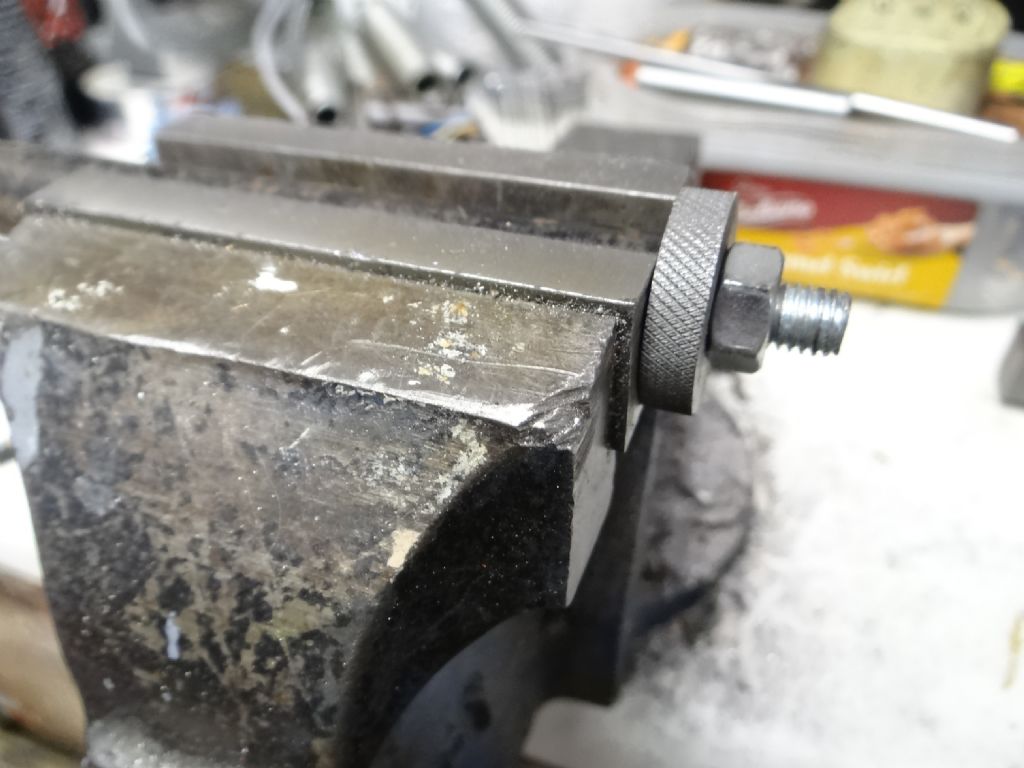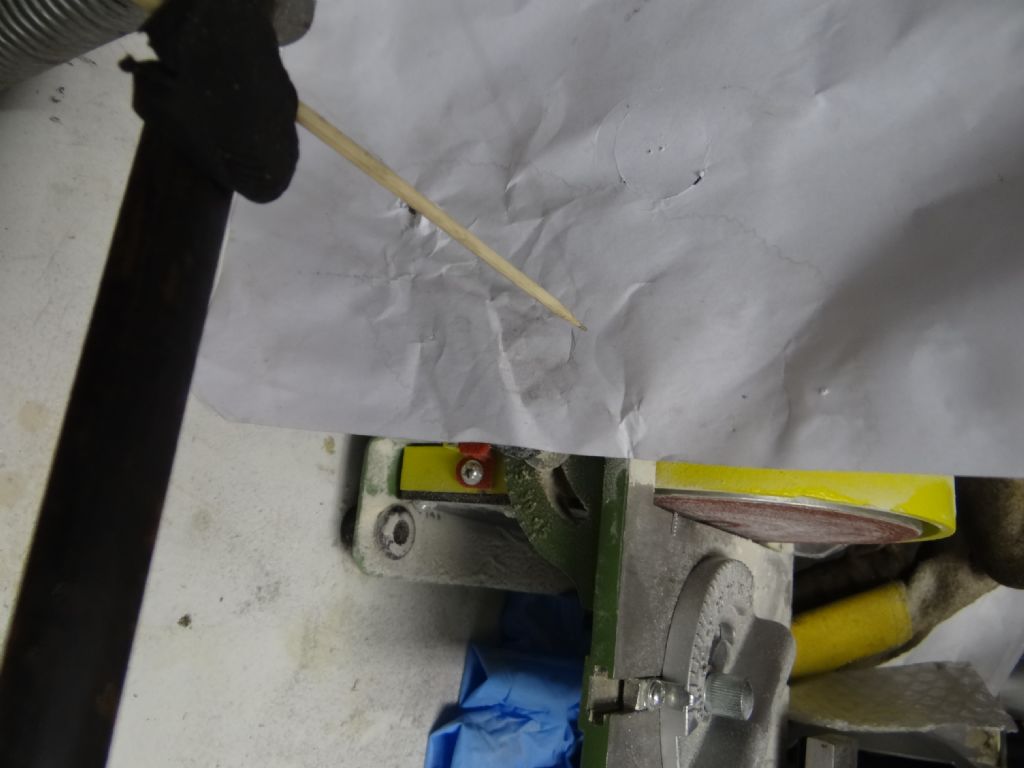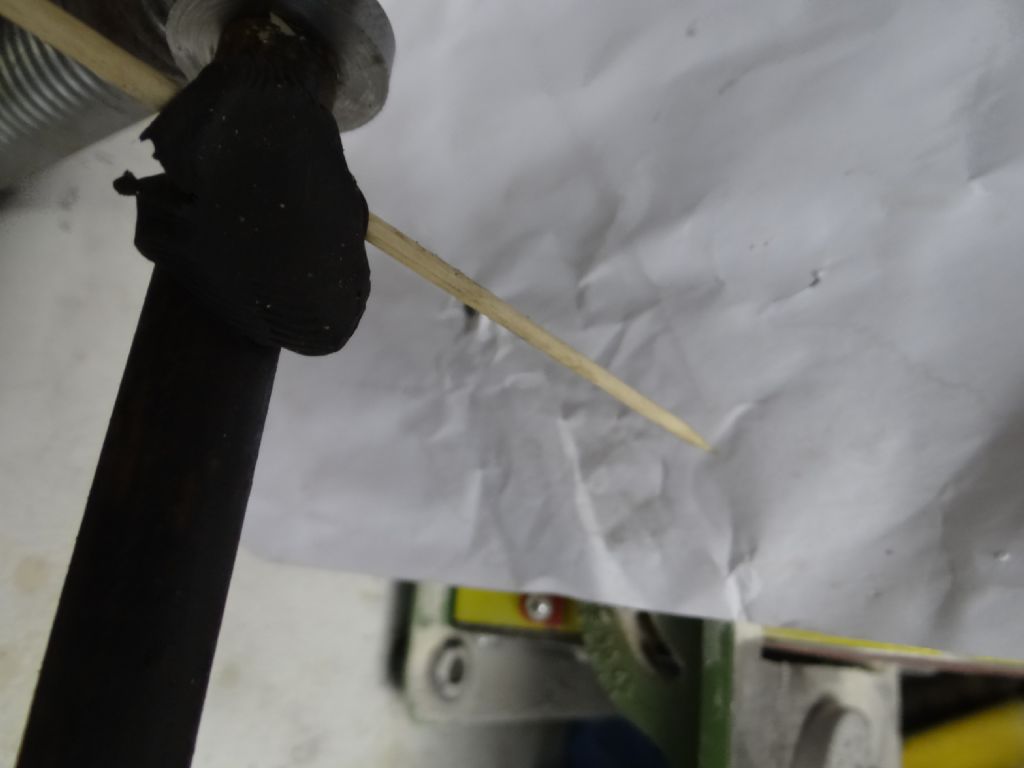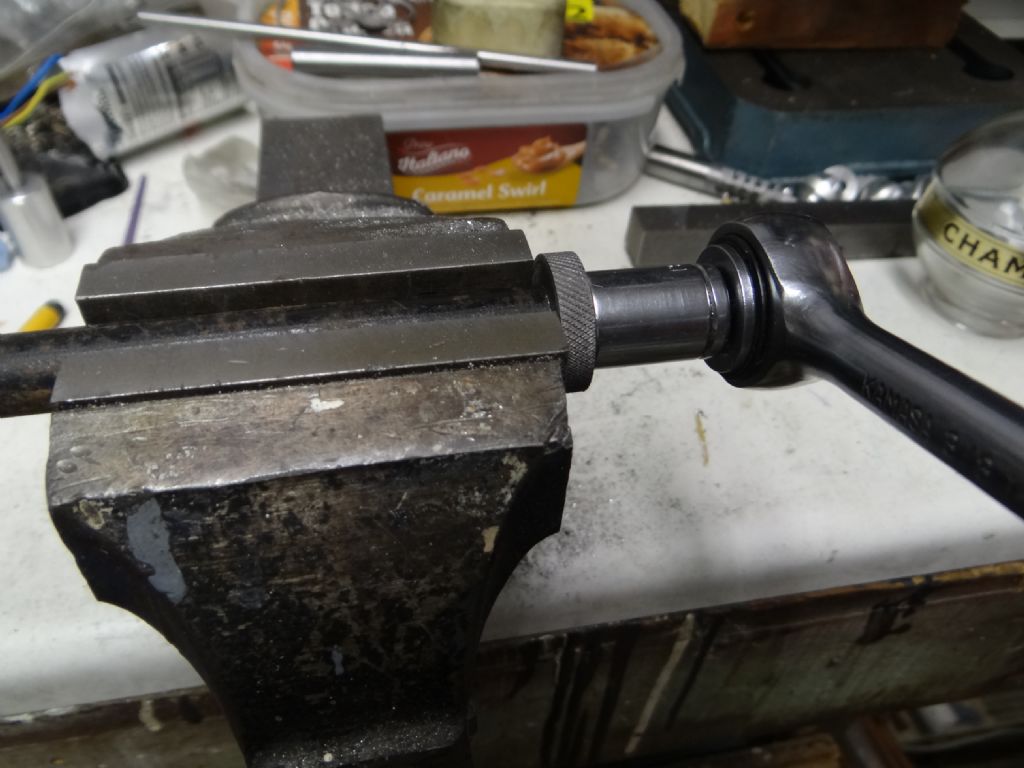The experiment and results you've all been waiting for! I hope it's worth it because I broke a NCIH parting blade making a thick washer.
I took a 750mm length of 1/2" O/D thick walled steel gas pipe and passed a metre of M8 DIY store studding through it. Each end was terminated with a 6mm thick steel washer and an M8 nut.
One end was held in a vice and about a kilogram of scrap was loaded on the other.

A bamboo pointer was stuck on the far end of the pipe.

The picture above is of the pointer position with the nuts cranked tight, ie with the pipe compressed. A pencilled mark records the position.
Tightening the nut caused the end of my pipe to move downwards. That's not what's expected if the pipe becomes more rigid when compressed due to tightening the studding nuts. Loosening the nuts causes the pipe to rise back to the start position. Again this isn't what I expected if pipe rigidity was being improved by compression.

I think the pointer falling as the pipe is compressed is due to the pipe bending. It follows the line of least resistance, and reinforces the pre-existing bend due to gravity. The pipe behaves like a spring, not a stiffened rod.
I put enough force on the nut to damage the thread on the studding.

Twanging the pipe to make it vibrate wasn't any more encouraging. The amount of tension on the studding doesn't seem to effect the amplitude and duration of the pipe's vibration one way or the other.
Unless there are experimental flaws (feel free to point them out), it looks very much as if compressing the pipe has no useful effect. In other words my experiment suggests 'bunkum' is more likely than 'rigidity improved'.
I can't claim the experiment is conclusive because the M8 studding I used isn't a tight fit inside the gas pipe. I suppose it's just possible that a much tighter fit would stop the pipe bending.
Dave
 jimmy b.
jimmy b.







